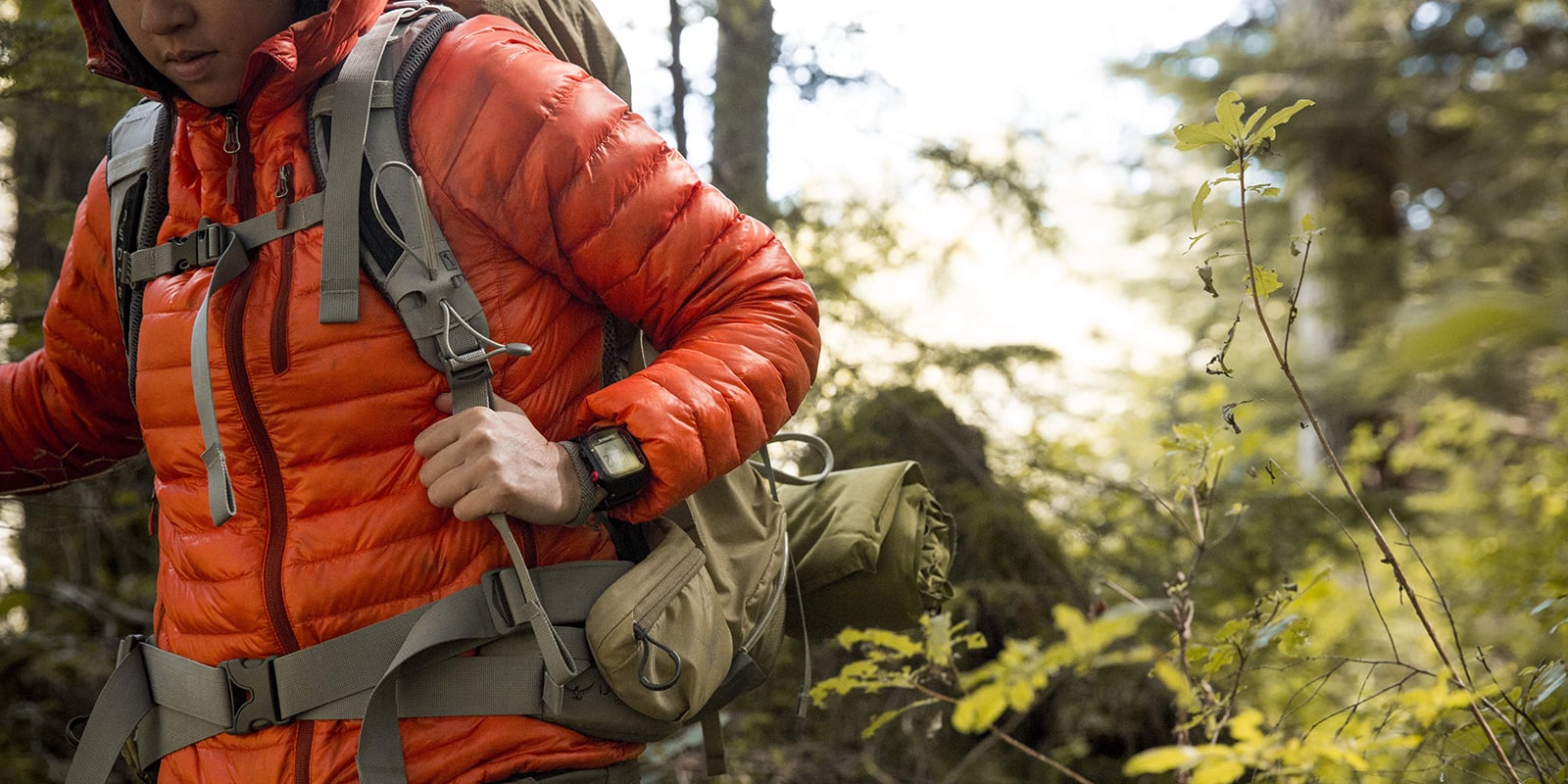Whether you're going backpacking for two nights over the weekend or two months on the Appalachian Trail, you'll need basically the same fundamental pieces of clothing for layering, with variations to address the specific weather or environmental conditions you're likely to encounter.
Layers are key. You can stop and remove a layer when you start to sweat, and add a layer when you start to feel chilled. As for the latter, heed the mantra of outdoors experts: It's easier to stay warm than to get warm. (For more information, see our article on Layering Basics).
Within this framework, the individual clothing choices you make will likely be based on a combination of the following factors, which may require tradeoffs:
- Functionality: Features to consider include fabrics that are moisture-wicking and quick-drying, sun-protective, antimicrobial to avoid odors, and able to rebuff insects where ticks, mosquitoes and other pests are a nuisance. Also consider how pockets, zippers, hoods, vents and many other details affect the performance of the pieces you choose.
- Weight vs. comfort: Some will forgo the convenience of added features in order to save ounces while others will opt for comfort despite the added weight.
Video: What to Wear Backpacking
Fabric Basics
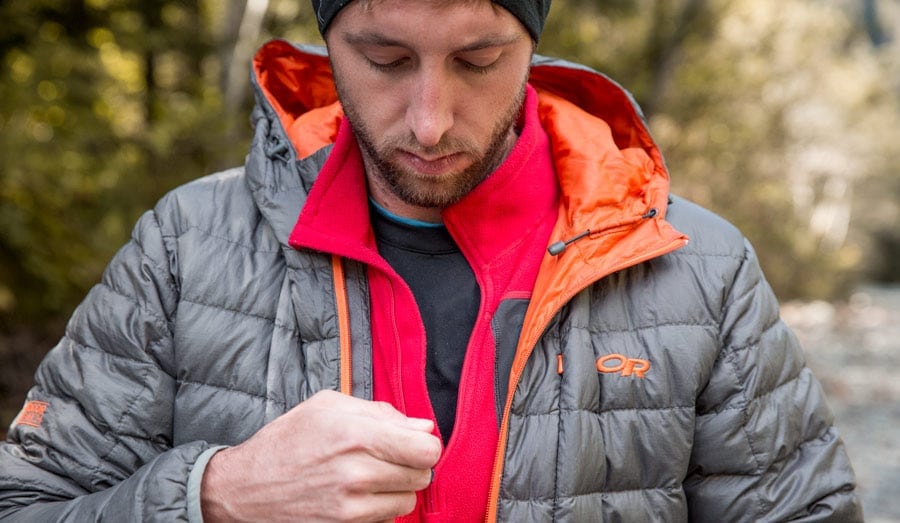
Here's a quick primer on typical fabric choices for key layering pieces:
Wool: Once maligned for being itchy, wool is now getting its day in the sun. Ultra-fine merino wool is itch-free, naturally breathable and moisture-wicking, fairly fast-drying and not prone to odors. Wool makes ideal socks, hats, tees and base layers. Despite all these benefits, some people avoid wool because they feel their skin is sensitive to it, and it can be expensive.
Polyester/nylon: These synthetics tend to be very quick-drying and quite durable. They make excellent pants and shirts. Some people find that synthetics can feel a bit clammy and they start to stink more quickly than natural fabrics.
Silk: Because silk moves moisture off your skin more slowly than synthetics, it is considered best only for moderate cool-weather activities. "Treated" silk has been chemically modified to enhance wicking. Silk makes a soft, luxurious layer and adds no bulk, but it can be prone to odor and is potentially vulnerable to abrasion and sunlight.
Cotton: There's a reason experienced hikers and backpackers warn their friends, "cotton kills." Though it's a comfortable option for lounging around, cotton should be avoided for active pursuits. Cotton doesn't efficiently wick moisture away from your skin, takes a very long time to dry, and is a poor insulator. It's especially important to choose a wool or synthetic option for base layers and socks.
Base Layers
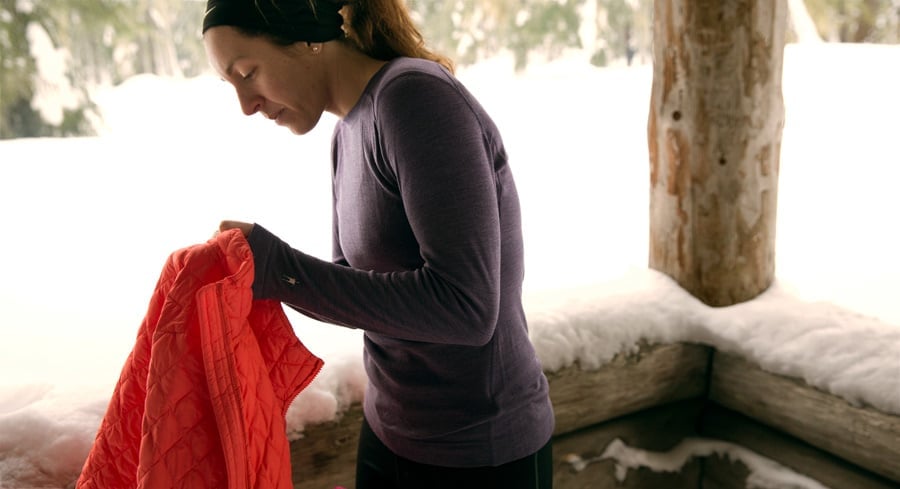
Your base layers are important because they manage moisture and keep a layer of warm air near your body. Choose a wicking fabric such as polyester or ultra-fine merino wool to keep your skin dry so you stay warm and comfortable. Wool can have a cozier feel than a slick synthetic fabric, a nice touch in colder temps.
Underwear: For backpacking trips, underwear is a matter of preference: Some men prefer boxer length, some women prefer the boy-short cut. Some women swear by wool undies, others only wear nylon-spandex mesh undies. Some backpackers prefer not to bother with underwear at all. If you do wear underwear, make sure they're airy and breathable, (which means not super tight) and are not cotton—once damp, cotton takes a long time to dry, which is uncomfortable and can cause chafing and yeast infections.
A general rule of thumb: Bring two to three pairs of underwear. Rinse out a pair as often as you feel it's warranted.
Bras: Choose a pullover sports bra without any clasps. Those metal or plastic parts can dig into your skin if they end up under your pack straps. Consider bringing an extra bra, or bring a super-lightweight camisole to wear while your bra is drying.
Tank top/camisole: A versatile piece, this lightweight top has many functions: adds to core warmth, makes a lighter alternative to a T-shirt and makes a good sleep top on warm nights. They may be made of silk, fine wool or synthetic fabrics.
Base layer top and bottoms: Also called long underwear, and available in different weights, these are a must for cool- or cold-weather backpacking. Choose from crew necks or zip-necks, which are a nice option for their ease of venting. Bottoms are multifunctional: You can hike in them under rain pants on rainy, chilly or windy days; they feel good to put on when you arrive in camp; and you can reserve a clean pair to sleep in.
Shirts, Pants and Shorts
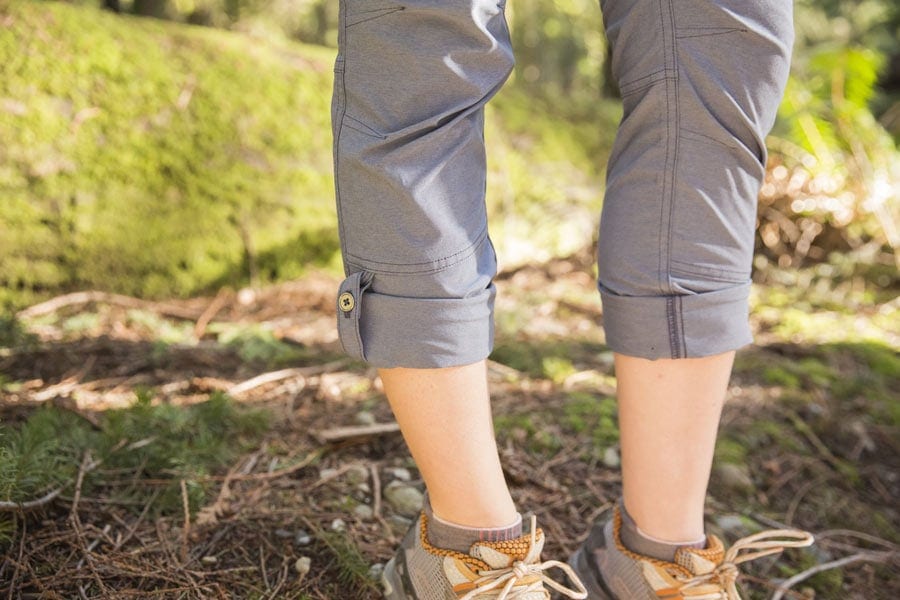
In general, bring one to two T-shirts, one long-sleeve shirt and one pair of lightweight yet durable synthetic pants. A pair of ultralight running shorts with a built-in brief can be a boon for hot weather: You can also swim in them and wear them while you wash and dry your pants.
T-shirt: Again, go with wool or synthetic. One tip is to bring two tees: one for hiking, and one to keep clean for sleeping in.
Long-sleeve shirt: Here's where locale comes in and where specific fabric benefits come into play. If you'll be hiking in the sun-drenched Southwest, for example, it's smart to bring a long-sleeve shirt rated UPF 50+ (many have an extendable collar for added neck protection). If you'll be trekking Northeastern forests, consider a long-sleeve shirt as well as long pants that contain an insect repellent to discourage ticks, mosquitoes, no-see-ums, black flies and more.
Convertible pants: Creek crossings and hot weather make convertible pants a good choice. Zip-off pants give you a real pair of shorts with nice gear pockets, but can be fussy to reattach; also, some find that the zipper can dig into their legs. Roll-up pants are a popular option, with button tabs above the ankle or near the knee. Cinch-pants also let you adjust the length.
Yoga pants/tights: These are a comfy choice for putting on at camp. While stretchy and easy to hike in, if your trail involves any rock scrambling or dense brush, think twice: They won't be as durable as nylon pants. (Tight clothing also does a poor job of protecting you from mosquitoes.)
Hiking skirt, dress or skort: Most are stretchy and skorts have a built-in liner. An insulated hiking skirt over yoga tights can be a great way to add warmth in cooler weather.
Mid Layers
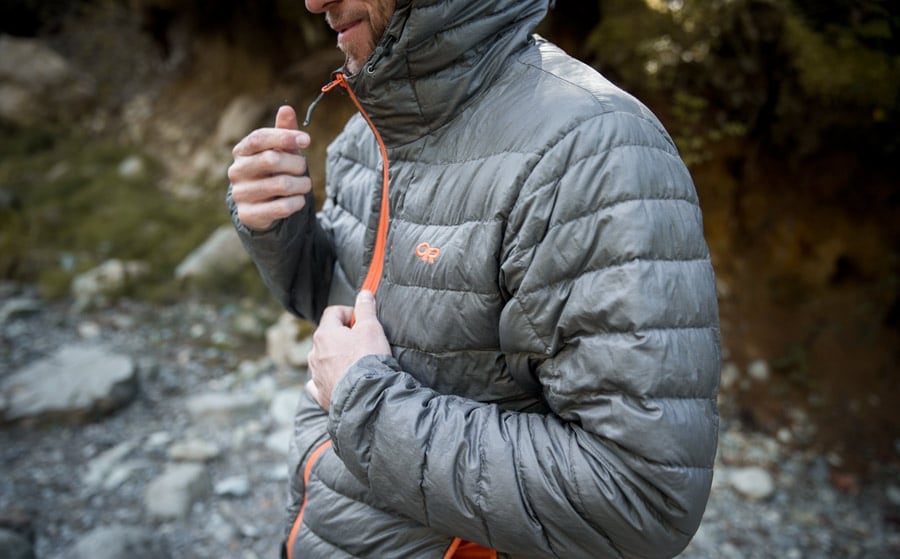
Here's where warmth comes in. A standard recommendation is to bring two of these layers, usually a simple lightweight zip-neck fleece top and a puffy jacket, but adjust as needed for your specific trip.
Fleece top: This is one of your most versatile pieces. On colder days, you can wear it while hiking and/or sleeping. On warmer nights when you don't need to wear it sleeping, it serves as a soft pillow. Even if you've been hiking in a tee all day, a fleece feels good to pull on as the sun goes down. To save ounces, choose one with a quarter zip and no pockets.
Puffy insulated jacket or vest: Again, depending on the weather forecast, you may want a fairly substantial down jacket if it's going to be cold or snowy. If milder temps are on tap, bring a down vest, lighter-weight down jacket or synthetic insulated puffy. It's good to be prepared for any sudden downturn in temperature. Any of these should compress compactly. For more in-depth information, see our article on How to Choose Insulated Outerwear.
Soft shell: A third option is a soft-shell jacket. Often these are water-resistant (not waterproof), may block wind, and may have a light fleecy lining for a bit of warmth. You still need to bring a solid rain jacket, though, for keeping dry in a storm, and soft shells are not very compressible.
Rain Jackets and Pants
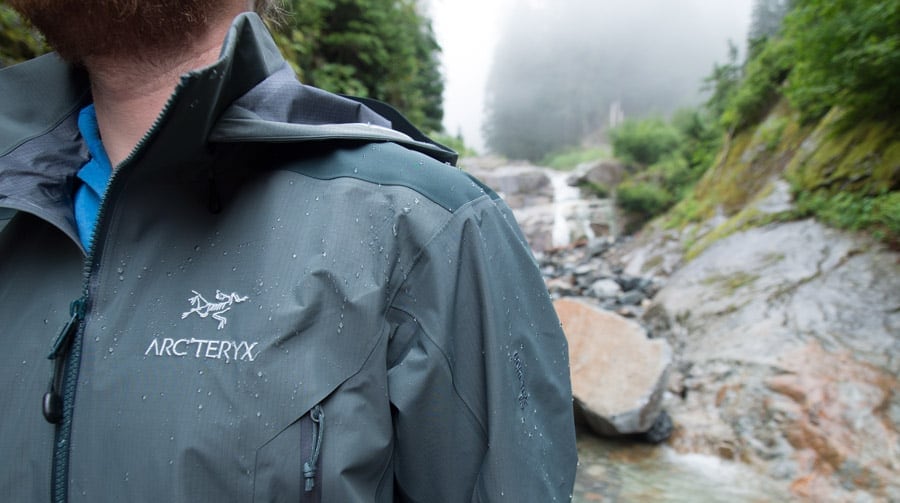
See those dark clouds gathering? You'll be glad you have your hard-shell outerwear. Choose a rain jacket and pants that are waterproof and breathable, which makes them fairly comfortable to backpack in. Remember: Keeping dry is key to avoiding hypothermia.
Also choose a jacket that's got pack-compatible pockets and an adjustable hood so you retain visibility as you hike. Pants with full-length side zippers can be the easiest to get on and off while leaving your boots on. Look for pants with an elastic or adjustable waist, and pockets, which are nice to have.
Tip: Even on dry days, some backpackers wear hard-shell outerwear as protection from wind and cold. And some hikers believe rainwear is the only layer that keeps mosquitoes from biting.
Accessories
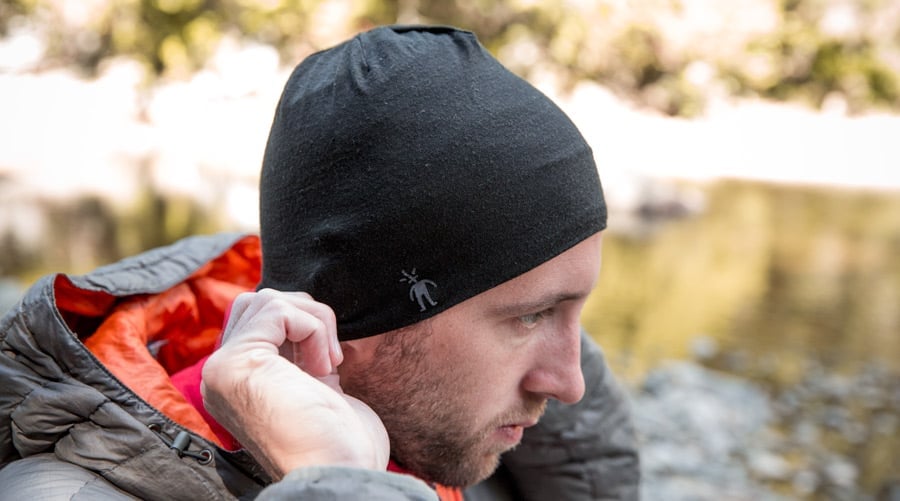
Keeping your feet, head and hands comfortable is crucial to a successful backpacking trip.
Socks: Socks are one of the most important items you can bring backpacking. If possible, try out all kinds of socks and sock combinations well in advance of a long backpacking trip so you know what feels good with the boots or shoes you'll be wearing. A wool/synthetic blend with plenty of cushioning works best for a great many people, especially those wearing boots. Many people like to wear a pair of thin liner socks underneath a heavier pair. If you'll be hiking in trail runners, you may want a lighter-weight pair of socks.
Sock tip: When you stop for a lunch break during the day, take off your boots and socks and let your socks dry in the sun. Dip your feet in a stream or lake if there is one, and let them dry out too. Do the same at the end of the day in camp, so you go to bed with clean, happy feet in a clean pair of socks dedicated to sleep.
Hats: Bring two types: one for sun protection, one for warmth. If you're fighting sun in the desert, consider a wide-brimmed hat or a billed cap with a sun cape attached. Your warm hat can be a simple wool or synthetic cap, one you can also sleep in.
Gloves for warmth: As long as the weather stays fairly mild, you can get by with a pair of stretch three-season gloves with a smooth exterior that resists light moisture and a fleecy interior that offers a little warmth.
Gloves for sun: Even our hands need UV protection, so wear sun-blocking gloves on desert hikes. These can be full-fingered or half-fingered and can be found in hiking or paddling departments. Look for a pair rated UPF 50+, or at least UPF 30.
Other accessories: A cotton bandana (finally, cotton gets its day) or a polyester neck gaiter are great to have for all kinds of reasons. Either can be worn on your head to keep hair out of your eyes, or around the neck for sun protection (or warmth, in the case of the neck gaiter).
Sleepwear
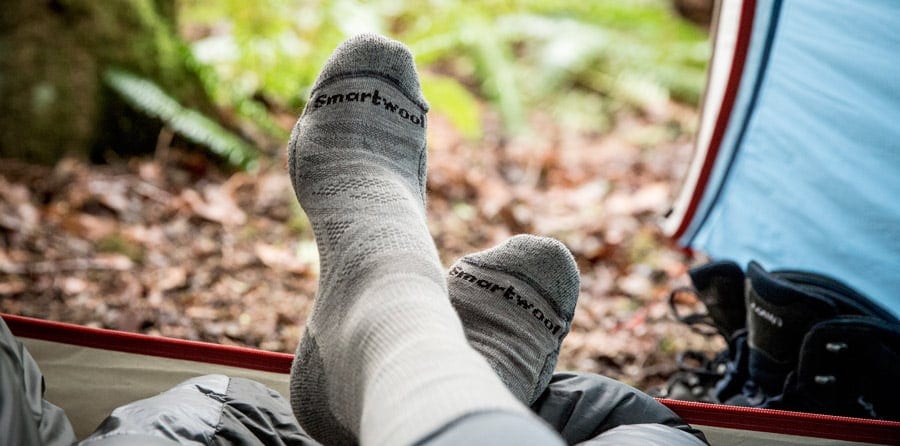
No matter how long your backpacking trip is, you're bound to end up with dirty, smelly clothes that you won't want to sleep in. One way to deal with this is to keep a clean tee and bottoms reserved only for sleeping. A lightweight pair of socks adds the final touch.
Tip: Keep the clean sleep socks inside your sleeping bag so you don't lose them; keep the other items in a stow bag separate from your smelly hiking clothes.
How to Clean Your Clothes While Backpacking
The most environmentally friendly way to wash your clothes is simply to rinse them. Dunk them in a rushing river or scrub them on lake stones and you'll be surprised how much grime comes off.
If you must wash an item, and have a portable folding sink or bucket (or even a cooking pot), you can carry some water a good 100 yards away from the source and scrub that item with a little bit of soap. Hang or lay your wet clothing in the sunshine to dry.
Tip: Bring a multipurpose camp towel. After you wash or rinse a clothing item, roll it up in the towel to blot it and squeeze it thoroughly. This will help the clothing item dry more quickly. If an item isn't quite dry by bedtime and may get dewy if left outside, bring it into your sleeping bag with you. Your body heat will help dry it.
